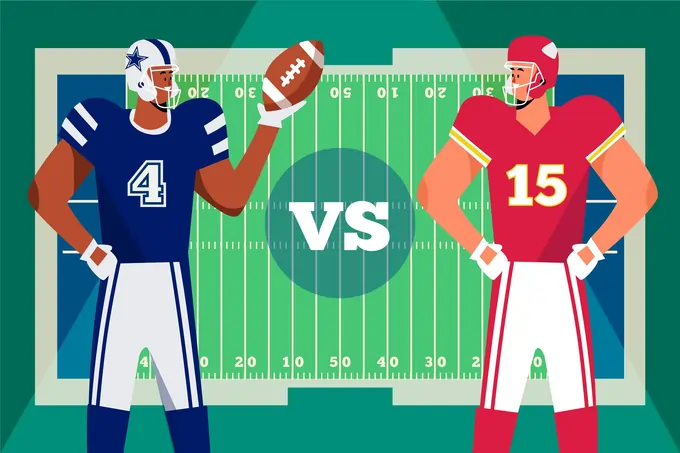
Improve Your Golf Swing Sequence with These Club Tips – Golf Distillery
Mastering the golf swing is the key to improving your game and achieving lower scores.
Whether you’re a beginner or an experienced player, understanding the fundamentals and incorporating advanced techniques can unlock your full potential on the course.
Foundational Golf Swing Tips for Beginners
Mastering the Basics: Grip, Posture, and Stance
To swing a golf club effectively, you must master the basics of grip, posture, and stance.
Grip the club comfortably in your fingers, with your left hand positioned below the right hand.
Maintain a bend in your knees and flexibility in your hips and shoulders, with your torso tilted slightly away from the target.
Position your feet shoulder-width apart, with your weight distributed evenly between your front foot and back foot.
Understanding Golf Swing Sequence and Plane
The golf swing is a series of motions that must be executed in the correct sequence.
The backswing sets the stage for the downswing, which generates power and accuracy.
Maintain a consistent swing plane, with the clubhead traveling parallel to the ground, throughout your swing.
Visualize swinging the club along an imaginary plane, which will strike the golf ball squarely and consistently.
Adjusting Spine Angle and Shoulder Tilt for Optimal Swing
Proper spine angle and shoulder tilt are crucial for an efficient swing.
During the backswing, maintain a slight tilt in your shoulders away from the target.
As you transition to the downswing, rotate your hips and shoulders toward the target, while keeping your spine angle consistent.
This movement will generate clubhead speed and power at the moment of impact.
The Essential Role of Golf Clubs in Perfecting Your Swing

Choosing the Right Club for Every Shot
Different golf clubs are designed for specific shot types and distances.
Drivers are best suited for tee shots, while irons and wedges are used for approach shots and short-game situations.
Understanding the characteristics of each club will help you choose the right tool for every shot, improving your accuracy and shot-shaping ability.
How Club Length and Flex Impact Your Swing and Ball Flight
The length and flex of a golf club shaft can significantly influence your swing and ball flight.
Longer clubs tend to generate more clubhead speed but can be more challenging to control.
Stiffer shafts promote stability and accuracy, while more flexible shafts may increase distance for some players.
Experiment with different shaft options to find the perfect match for your swing tempo and ball flight preferences.
Golf Club Grip Techniques to Improve Your Swing Sequence
The way you grip the club can have a profound impact on your swing mechanics.
A proper grip will help you maintain control throughout the swing and release the clubhead effectively at impact.
Experiment with different grip styles and pressure points to find the combination that works best for your swing sequence.
Advanced Techniques: Improving Backswing and Downswing

Creating a Smooth Transition from Backswing to Downswing
A smooth transition from the backswing to the downswing is essential for a consistent and powerful swing.
As you reach the top of your backswing, initiate the downswing by rotating your hips toward the target, followed by your shoulders and arms.
This sequential motion will generate clubhead speed and prevent excessive spin or loss of control.
Incorporating Hip Turn and Shoulder Rotation for Power
Hip turn and shoulder rotation are key components of a powerful golf swing.
During the backswing, rotate your hips and shoulders away from the target, creating torque and potential energy.
In the downswing, unwind your hips and shoulders toward the target, transferring that energy into the golf ball at impact.
This kinetic chain of motion will maximize clubhead speed and distance.
Minimizing Sway and Increasing Extension Through Impact
Sway, or lateral movement of your upper body, can disrupt your swing path and consistency.
To minimize sway, maintain your balance and keep your head still throughout the swing.
Extension through impact is also crucial for solid contact and increased distance.
Rotate your torso and follow through fully after striking the ball, extending your arms and club toward the target.
Tailoring Your Golf Swing for Different Clubs and Shots
Adjusting Your Swing for the Driver vs. Irons

While the fundamental swing mechanics remain the same, adjustments are necessary when swinging different clubs.
With a driver, you’ll need a wider arc and more upright swing to launch the ball effectively.
For irons, adopt a more compact swing, with a shallower approach and steeper descent into impact.
Experiment with different swing paths and trajectories to optimize your performance with each club.
Strategies for Tee Shots and Golf Course Management
Tee shots are critical for setting up the rest of the hole and managing the course effectively.
Focus on distance control and accuracy off the tee, avoiding hazards and positioning yourself for an optimal approach shot.
Consider wind direction and course layout when planning your strategy for each tee shot.
Fine-Tuning Your Approach for Precision with Wedges
Wedges are essential for precision approach shots and short-game situations.
When swinging a wedge, focus on control and consistent contact, rather than raw power.
Adjust your swing length and tempo to flight the ball accurately and hold the green.
Practice different wedge shots to improve your feel and confidence around the greens.
Common Mistakes and How to Correct Them
One classic oopsie is messing up your golf swing. You know, when your ball decides it would rather explore the rough than head toward your target. Fixing it isn’t rocket science. First up, keep those eyes on the ball, and second, make sure your body’s swinging through to your target, not just your arms. Voilà, you’re no longer sending the ball on a wild adventure!
Fixing the Slice: Adjusting Grip and Swing Path
A slice, or unintentional fade, is a common issue for many golfers.
To correct a slice, adjust your grip by strengthening your left hand position (for right-handed golfers).
Monitor your swing path, ensuring that your club travels from inside to out toward the target line.
Drills and swing adjustments can help you eliminate the slice and find the fairway more consistently.
How to Avoid Hitting the Ball Fat or Thin

Fat shots (hitting the ground before the ball) and thin shots (striking the ball too high on the clubface) are frustrating and can cost you distance and accuracy.
To avoid fat shots, focus on staying behind the ball and rotating your hips and shoulders fully through impact.
For thin shots, adjust your weight distribution and ensure a descending blow into the back of the ball.
Improving Balance and Preventing Over-Rotation
Proper balance is crucial for a consistent and powerful swing.
Over-rotation, or spinning out after impact, can disrupt your balance and cause accuracy issues.
Learn from the Pros: What We Can Learn from Tiger Woods’ Swing
When trying to amp up our golf game, we can’t help but look up to legends like Tiger Woods and Jack Nicklaus. One crucial tip is to ensure our front shoulder is under our chin during the swing, which helps us lift the club properly. The goal is to face the target with our body squared and feet perpendicular to the direction we want the ball to go. This alignment helps in making a smooth, aggressive swing towards the target.
Tiger’s technique shows us the importance of not letting our left arm break or buckle. Keeping it straight alongside a stiff left wrist really makes a difference. As we bring the club around, we focus on shifting our belt buckle, i.e., our hips, toward our target while the front of the ball should stay slightly ahead of the ball in the initial phase of the swing. This trick might also save our lower back from unnecessary strain.
Another cool thing we pick up from Tiger is how to handle the back shoulder and forearm. Letting them lift and straighten slower than the front shoulder helps keep our swing’s power under control. Avoid getting too tense; a relaxed muscle tension is key. And, hence, properly positioning our left foot ensures that our finish is as graceful as it is powerful, with the wrist rolling just right to direct the ball towards the target.
Analyzing Tiger Woods’ Swing Sequence and Posture
Tiger Woods is one of the greatest golfers of all time, and his swing is a masterclass in technique and power. From his setup, Woods maintains a strong base with his knees flexed and weight evenly distributed. During the backswing, he rotates his shoulders fully while keeping his lower body stable, creating tremendous coil. As he transitions to the downswing, Woods transfers his weight masterfully, rotating his hips aggressively toward the target.
Implementing Tiger Woods’ Techniques into Your Swing
While few can match Tiger’s athleticism, there are valuable lessons we can apply to our own swings. Emulate his posture and balance at address, with athletic knee flex and a centered stance. Focus on rotating fully in your backswing while maintaining spine angle, then driving your hips powerfully toward the target. Stay behind the ball and fire your arm swing from the inside, mimicking Woods’ explosive release.
Key Takeaways from Tiger Woods’ Approach to Golf
Beyond his technical prowess, Tiger Woods’ mental approach is equally impressive. He visualizes every shot, trusting his abilities while remaining focused on the present moment. Woods practices with purpose, constantly refining his swing and strategizing course management. By emulating his commitment and work ethic, you can elevate your own game and unlock your full potential on the course.
FAQs
How do you do a proper golf swing?
A proper golf swing involves mastering the fundamentals of grip, posture, and alignment, followed by a smooth sequence of the backswing, downswing, and follow-through. Rotate your hips and shoulders fully, transfer your weight correctly, and maintain balance throughout the swing.
What are three tips to improve your golf swing?
1) Focus on balance and posture: Maintain a stable base with your weight evenly distributed. 2) Rotate fully in your backswing: Coil your shoulders while keeping your lower body stable. 3) Initiate the downswing with your hips: Drive your hips aggressively toward the target, followed by your torso rotation.
How do you do basic golf swings?
For basic golf swings, start with a proper grip and stance. Swing the club back while rotating your shoulders, then initiate the downswing by driving your hips toward the target. Release the club through impact, transferring your weight to your front foot and following through fully.
What is the swing in golf?
The swing in golf refers to the coordinated sequence of movements used to strike the ball. It involves a backswing, downswing, and follow-through, with the goal of transferring energy from your body to the club, squarely striking the ball, and directing it toward the intended target.




